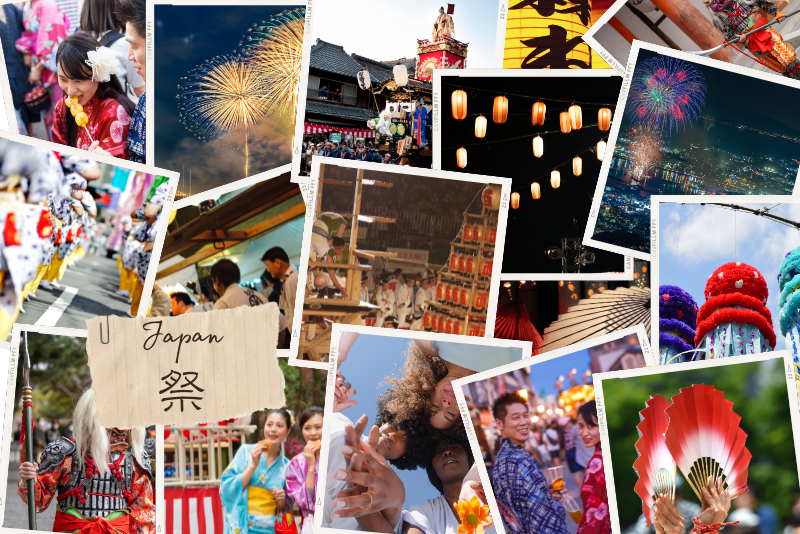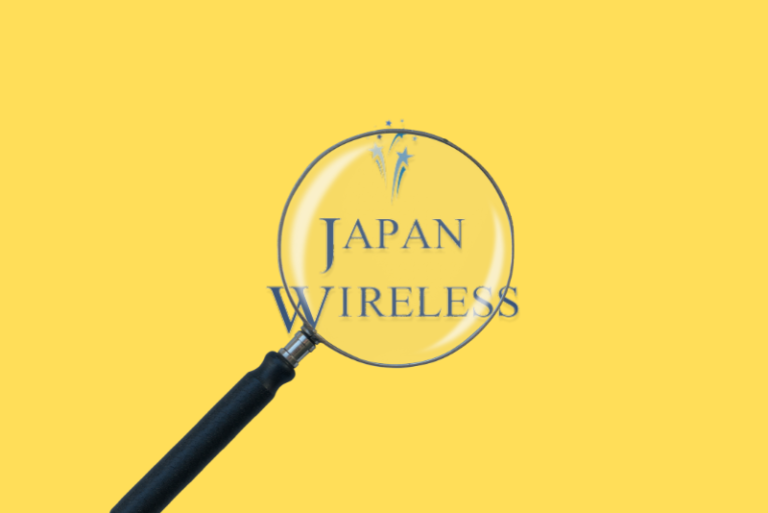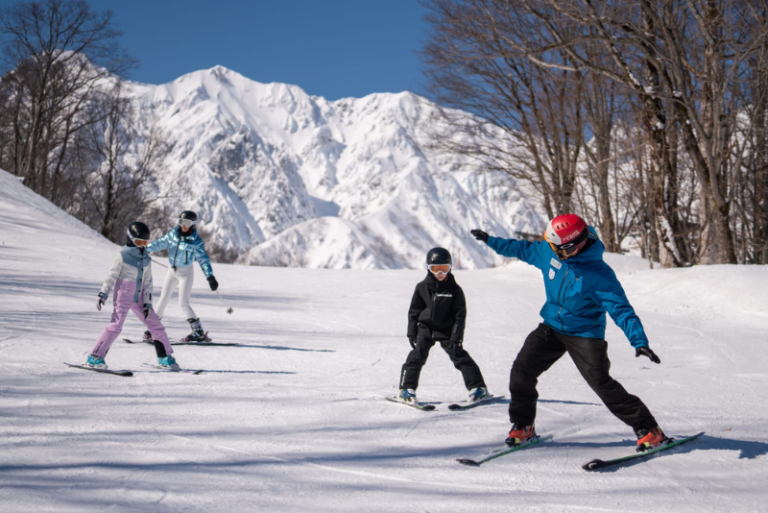Festivals are the heartbeat of Japanese culture.
Over 300,000 festivals are held annually in Japan. From historical re-enactments to modern-day spectacles, festivals highlight the diverse cultural differences throughout Japan. The magical tapestry of delights makes Japanese festivals (matsuri) an unforgettable experience.
Booming taiko drums, stunning floats, and delicious street food create a tapestry of sensory delights. Attending a Japan festival is a right of passage for any true Japanese fan. Dress up in a Yukata or Jimbei, help carry an omikoshi shrine, and delight in the electrifying fireworks display.
Whether you are planning your maiden trip to Japan or looking to immerse yourself deeper into its cultural heartbeat, here are 9 Japan festivals you won’t want to miss

9 Must-See Japan Festivals
- Gion Matsuri
- Sapporo Snow Festival
- Aomori Nebuta Matsuri
- Kanamara Matsuri
- Chichibu Yomatsuri
- Himeji Yukata Festival
- Kanto Matsuri
- Nagasaki Kunchi
- Jidai Matsuri
1 – Gion Matsuri
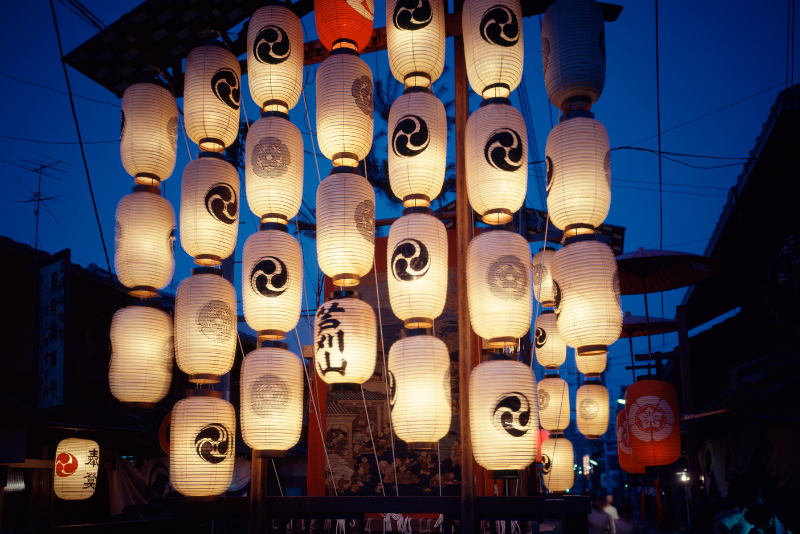
- Where: Kyoto City, Kyoto
- When: July
One of the oldest and grandest festivals, Gion Matsuri, dates back to the 9th century. Originally established to appease the deity of the Yasaka Shrine and ward off plagues, it has since become a symbol of Kyoto’s cultural heritage. The grandeur and historical significance of Gion Matsuri make it a must-experience festival that honors tradition and brings history to life.
Gion Matsuri is famed for its enormous floats, known as yamaboko, which parade through the streets of Kyoto. The festival culminates in two major parades on July 17th and 24th, with the Byobu Matsuri offering a chance to view breathtaking folding screen paintings displayed in private homes. Each float, a work of art, draws crowds with exquisite detail and grand scale, embodying the festival’s spirit.
Traveler Tip: To fully savor the Gion Matsuri experience, position yourself early along Shijo Street or near Yasaka Shrine for the best views.
2 – Sapporo Snow Festival

Image Source: Sapporo.travel
- Where: Sapporo City, Hokkaido
- When: February
The Sapporo Snow Festival, or Yuki Matsuri, transforms the city of Sapporo into a winter wonderland every early February. What began in 1950 with six snow statues has evolved into an internationally renowned event featuring massive snow and ice sculptures, vibrant illuminations, and interactive activities. The intricate sculptures, some towering over 15 meters high, are impressive and often depict famous landmarks, beloved characters, and stunning abstract art.
The festival usually spans the first week of February. Book your accommodations early, as Sapporo becomes a hot spot for international tourists during this period.
Traveler Tip: Consider staying near Odori Park for easy access to the main festival sites. You can navigate the festival using the event-specific buses and trams.
3 – Aomori Nebuta Matsuri
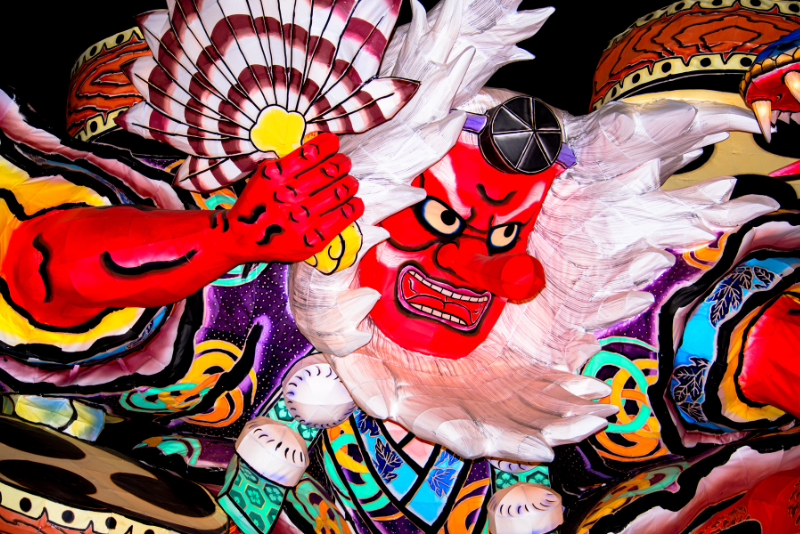
- Where: Aomori City, Aomori
- When: August 2 – 7
Aomori Nebuta Matsuri, held in early August, is famous for its gigantic lantern floats, or nebuta, which depict mythological creatures and historical figures. The festival began as a traditional practice to wash away sins and pray for health, with the release of lanterns symbolizing the purification process. Each float, brightly lit and intricately painted, moves through the streets accompanied by haneto dancers and spirited drummers. This festival, rich in tradition, tells stories through its vividly illuminated floats and pulsating music.
Secure a spot along the designated parade route for a close-up view of the nebuta floats.
Traveler Tip: Consider renting a haneto costume (around 4,000 yen) to participate in the festival as a dancer.
4 – Kanamara Matsuri
- Where: Kawasaki, Kanagawa
- When: First Sunday in April
Kanamara Matsuri, also known as the Festival of the Steel Phallus, takes place in Kawasaki and is one of Japan’s most unique festivals. Held in early April, this matsuri is a vibrant celebration featuring phallic symbols of all shapes and sizes paraded through the streets. Vendors sell various phallic-themed sweets and goods, contributing to the festival’s cheerful and quirky atmosphere.
The origins of Kanamara Matsuri are rooted in ancient Shinto beliefs. It celebrates fertility, prosperity, and safe childbirth. Over the years, it has also become a fundraising event for HIV awareness. The blend of historical reverence and modern social causes makes this festival a fascinating study of cultural adaptation.
Traveler Tip: Get there before noon to secure a good spot, enjoy the festivities, and participate in the parade without feeling overwhelmed by the crowds
5 – Chichibu Yomatsuri
- Where: Chichibu, Saitama
- When: December 2 – 3
Held annually on December 2nd and 3rd in Chichibu, the Yomatsuri Festival is renowned for its elaborate floats adorned with bonbori (paper lanterns) and spectacular fireworks display. The festival offers a mesmerizing blend of tradition and celebration against the backdrop of winter.
Arrive early to find seating and enjoy the floats’ preparation stage. Observe local customs and etiquette, and take advantage of the local food stalls offering delicious festival snacks such as yakitori and chocolate-covered bananas. The grandeur of Chichibu Yomatsuri is best enjoyed when you watch both the floats and fireworks light up the night sky.
Traveler Tip: Consider reserving seats in advance for better views.
6 – Himeji Yukata Festival
- Where: Himeji City, Hyogo
- When: late June
The Himeji Yukata Festival celebrates the lightweight summer kimono, known as yukata, and its cultural significance in Japanese society. This festival encourages everyone, from locals to tourists, to don a yukata, adding a traditional touch to the festivities and promoting cultural heritage.
Wander through the numerous food stalls offering local delicacies while making your way to the grand centerpiece, Himeji Castle. Blending historical architecture with the sea of colorful yukata-clad visitors creates a visual spectacle that stands out among Japanese festivals. Participate in traditional dances or stroll through the lively atmosphere to fully appreciate the cultural immersion.
Traveler Tip: Participants are encouraged to wear yukata, a traditional summer garment. Those wearing yukata enjoy free admission to Himeji Castle and discounted bus fares.
7 – Kanto Matsuri
- Where: Akita City, Akita
- When: August 3 – 6
The Kanto Matsuri, held in early August in Akita, showcases a breathtaking display of performers balancing giant bamboo poles (Kanto) strung with lanterns. Each Kanto can weigh up to 50 kilograms and reach heights of 12 meters, making the feats of balance and strength particularly impressive. The rhythmic drumming and flute music accompanying the event add to the festival’s captivating ambiance.
The Kanto Matsuri, originally known as “Neburi Nagashi,” has its roots in the Edo period. This captivating festival was believed to cleanse participants of bad spirits and illness. The lanterns used during the celebration resemble rice plants, symbolizing heartfelt prayers for a bountiful harvest.
Traveler Tip: Try balancing a kanto pole yourself during the “Interactive Time” after performances.
8 – Nagasaki Kunchi
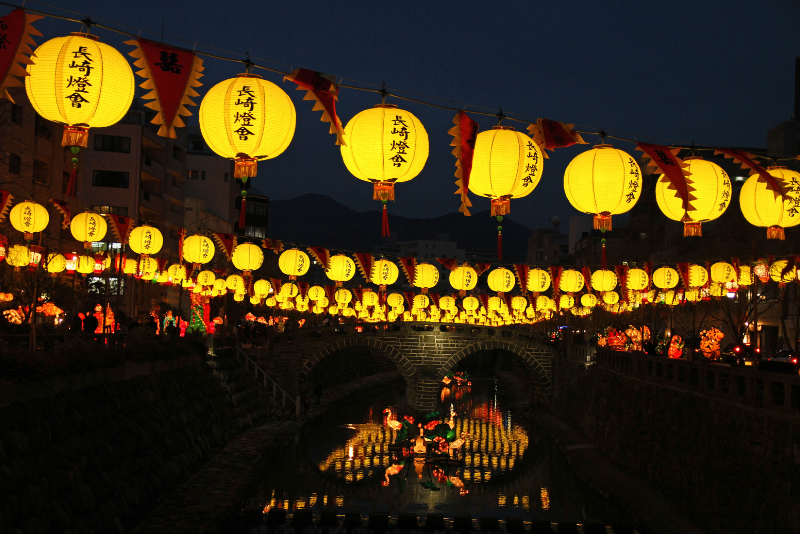
- Where: Nagasaki City, Nagasaki
- When: October 7-9
Nagasaki Kunchi, celebrated in early October, showcases Japan’s cultural diversity. During the festival, you’ll be treated to an array of vibrant performances that truly showcase the region’s cultural tapestry. Expect to see traditional Japanese dances, often characterized by graceful movements and colorful costumes, alongside lively dragon dances influenced by Chinese culture. The shows also feature large floats that parade through the streets, each telling a story steeped in local tradition.
One of the unique aspects of Nagasaki Kunchi is that each city district, or odori-cho, only gets to perform once every seven years. This keeps the festival fresh and exciting and encourages local communities to invest time and creativity into their performances, ensuring every presentation is a delightful surprise for festival-goers.
Traveler Tip: Performances are held in the mornings and evenings. Paid seating areas are available but sell out quickly.
9 – Jidai Matsuri
- Where: Kyoto, Kyoto
- When: October 22
On October 22, Jidai Matsuri (Festival of Ages) in Kyoto is a grand historical parade featuring over 2,000 participants dressed as samurai warriors, emperors, and common folk from various eras of Kyoto’s thousand-year history. This re-enactment brings history alive, transporting spectators back in time through detailed costumes and dramatic procession.
Find a viewing spot along the parade route early, particularly near the Kyoto Imperial Palace or Heian Shrine, for prime views. Learn about Japanese history or join a guided tour to enhance your understanding and appreciation of the historical context behind the spectacle.
Traveler Tip: Wear comfortable shoes. The festival involves a lot of walking and standing, so wear comfortable footwear to navigate the busy streets and enjoy the various activities.
Popular National festivals?
Some popular national festivals in Japan include:
- Shogatsu (New Year’s) – a celebration of the new year with traditional food, decorations, and customs.
- Setsubun – a bean-throwing festival to drive away evil spirits and welcome good luck for the upcoming year.
- Hinamatsuri (Girls’ Day) – a celebration of girls with unique displays of dolls, sweets, and other traditions.
- Hanami (Cherry Blossom Viewing) – a flower festival dedicated to enjoying the beauty of cherry blossom trees in full bloom.
- Tanabata – a star festival where people write wishes on colorful strips of paper and hang them on bamboo branches.
- Obon – a festival to honor ancestors and pray for their spirits. It often includes traditional dances and lantern displays.
- Shichi-go-san (Seven-Five-Three) – a celebration of children reaching the ages of 3, 5, and 7 with visits to shrines and dressing up in traditional attire.
These are just a few examples of national festivals, but many more are celebrated throughout Japan, both big and small. Each region also has unique local festivals worth experiencing if you have the chance.
Attending Japanese Festivals
Japan offers a year-round festival calendar, including captivating summer fireworks festivals (Hanabi) and enchanting winter snow celebrations. Each season brings its unique set of festivals, providing endless opportunities to engage with Japan’s rich cultural heritage.
Traditional Foods and Cultural Atmosphere
Festival food stalls, or yatai, are a highlight of any matsuri. They offer a wide variety of traditional Japanese street food, such as takoyaki (octopus balls), taiyaki (fish-shaped cakes), and yakitori (grilled chicken skewers). The lively and friendly atmosphere, filled with music, dance, and shared joy, enhances the cultural experience.
Accessibility and Transportation
Japan’s efficient public transportation system makes traveling to festivals relatively easy. Special event trains and buses often operate during major festivals, ensuring that even the most remote events are accessible. Plan ahead to navigate festival crowds efficiently and consider using regional rail passes for cost-effective travel. Consider purchasing a Japan Rail pass for your trip to save on transportation costs.
Conclusion
Japan’s festivals are a kaleidoscope of cultural experiences, each offering unique insights and immeasurable joy. From the grand parades of Gion Matsuri to the quirky celebrations of Kanamara Matsuri, each matsuri paints a vibrant picture of Japan’s rich cultural tapestry. Plan your trip to Japan and immerse yourself in these extraordinary celebrations. Every festival is an invitation to witness, participate, and fall in love with the timeless traditions that define the heart of Japan.
FAQ
What is the famous festival in Japan?
Japan has many famous festivals, but some of the most popular ones include Gion Matsuri in Kyoto and Nebuta Matsuri in Aomori. These festivals attract millions of visitors annually and offer a unique cultural experience.
What is the best time to visit Japan for festivals?
The festival season in Japan begins in spring (March-April) with cherry blossom festivals and continues through summer (June-August), fall (September-November), and winter (December-February). Each season offers its distinct set of festivals, so it ultimately depends on which events you want to attend.
How should I plan to attend festivals in Japan?
When planning to attend a festival in Japan, check the event’s dates and location beforehand. Consider purchasing Japan Rail passes or special event trains/buses for convenient transportation. It is also essential to book accommodations and tickets (if required) well in advance, as many festivals attract large crowds.
Can foreigners participate in Japanese festivals?
Yes, most Japanese festivals welcome foreign visitors to participate and engage with the Japanese community. However, respecting cultural traditions and customs during these events is essential. Some festivals may have specific rules or guidelines for participation, so it is best to research beforehand or ask locals for advice. Participating in Japanese festivals can be a great way to immerse oneself in the country’s vibrant culture and traditions.
What should I wear to a Japanese festival?
The traditional clothing worn at festivals is often a yukata, a lighter version of a kimono. However, many attendees also opt for more casual attire, such as summer dresses, shorts, and T-shirts. Out of respect for the cultural atmosphere, it is best to avoid wearing revealing or inappropriate clothing at festivals.
Are there any specific customs or etiquette I should know when attending Japanese festivals?
Yes, there are a few customs and etiquette to remember when attending Japanese festivals. First, it is customary to bow when greeting someone or showing respect. Also, be mindful of taking off your shoes before entering certain areas, such as temples or shrines. Additionally, avoid eating while walking and dispose of trash properly. It is also polite to ask for permission before taking photos of people or their belongings.
Is food available at Japanese festivals?
Yes, most festivals will have food stalls or vendors selling traditional festival foods such as yakisoba (fried noodles), takoyaki (octopus balls), okonomiyaki (savory pancake), and more. Depending on the region or festival, there may also be local specialties. Be sure to try regional food and flavors to fully experience the festival.
Hi, welcome to Events Hakuba. I started this site about eight years ago with a friend (who’s since moved away) to help travelers get more out of their time in Hakuba. What began as an event calendar has grown into a resource for everything from logistics to local insights.
It’s a one-person operation, and while I do my best to keep things current, it’s not a full-time gig—so thanks for your patience if anything’s slightly out of date.
If you’re curious about my main work, I run The Fifth Business — helping independent hotels scale guest revenue, retention, and operations without adding complexity.




